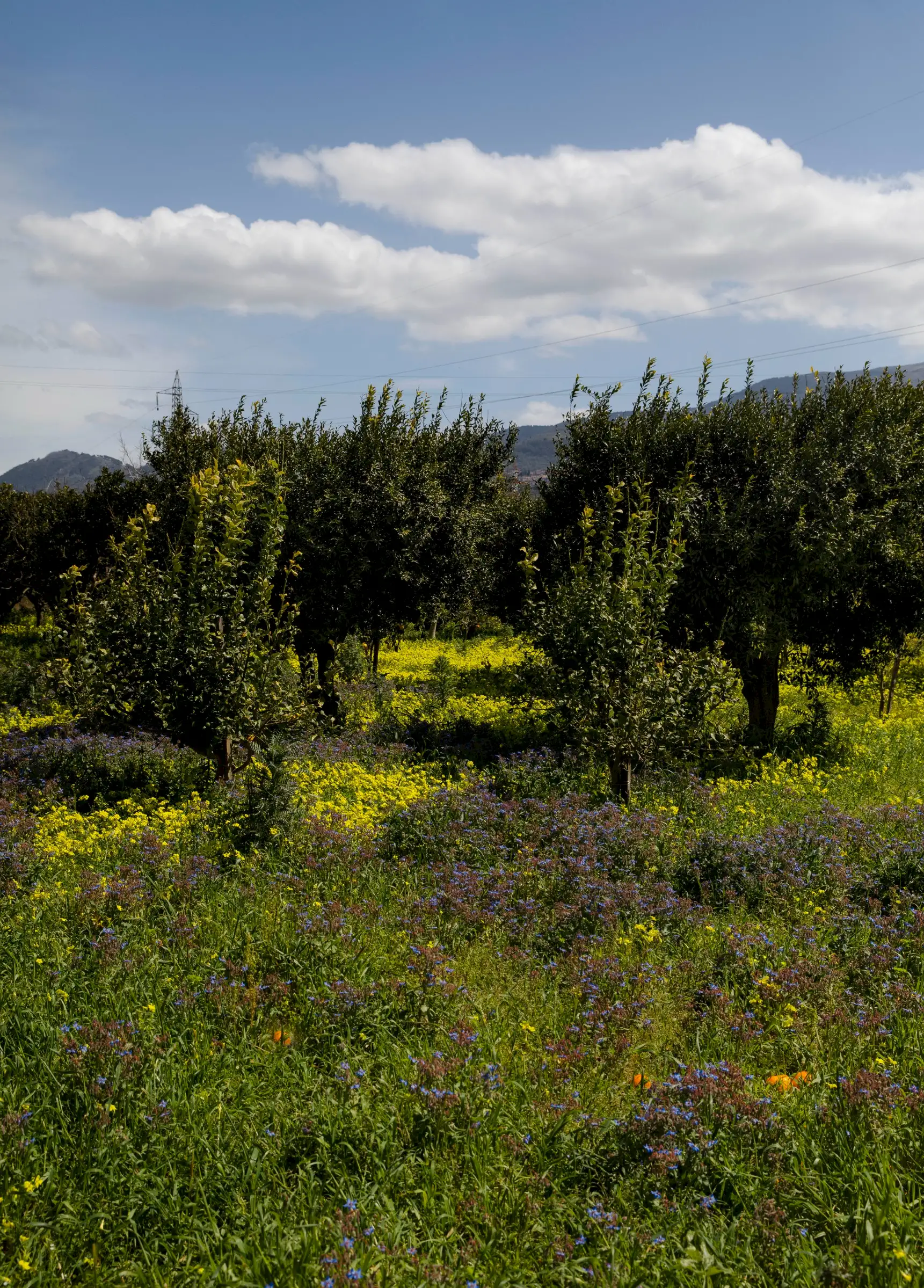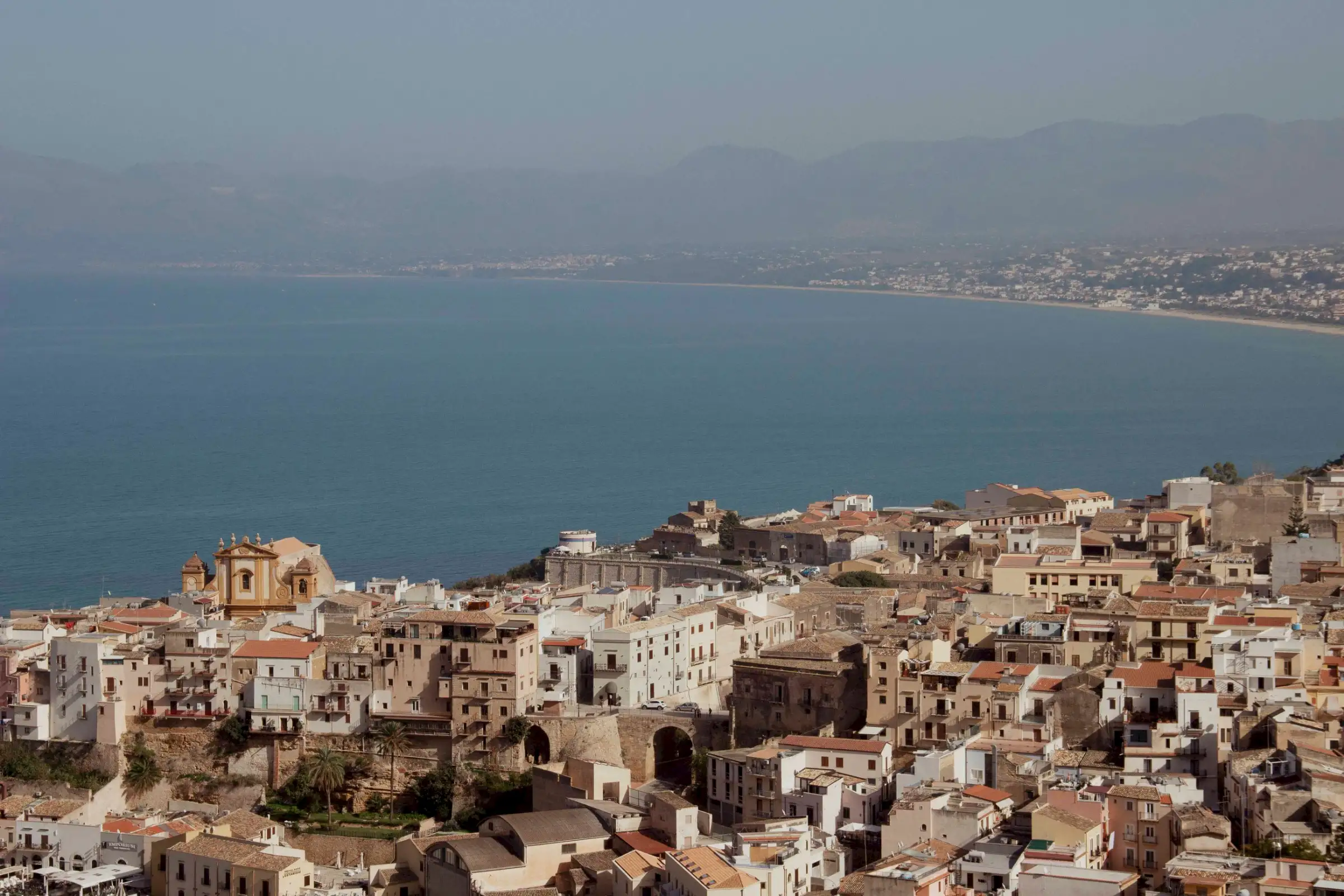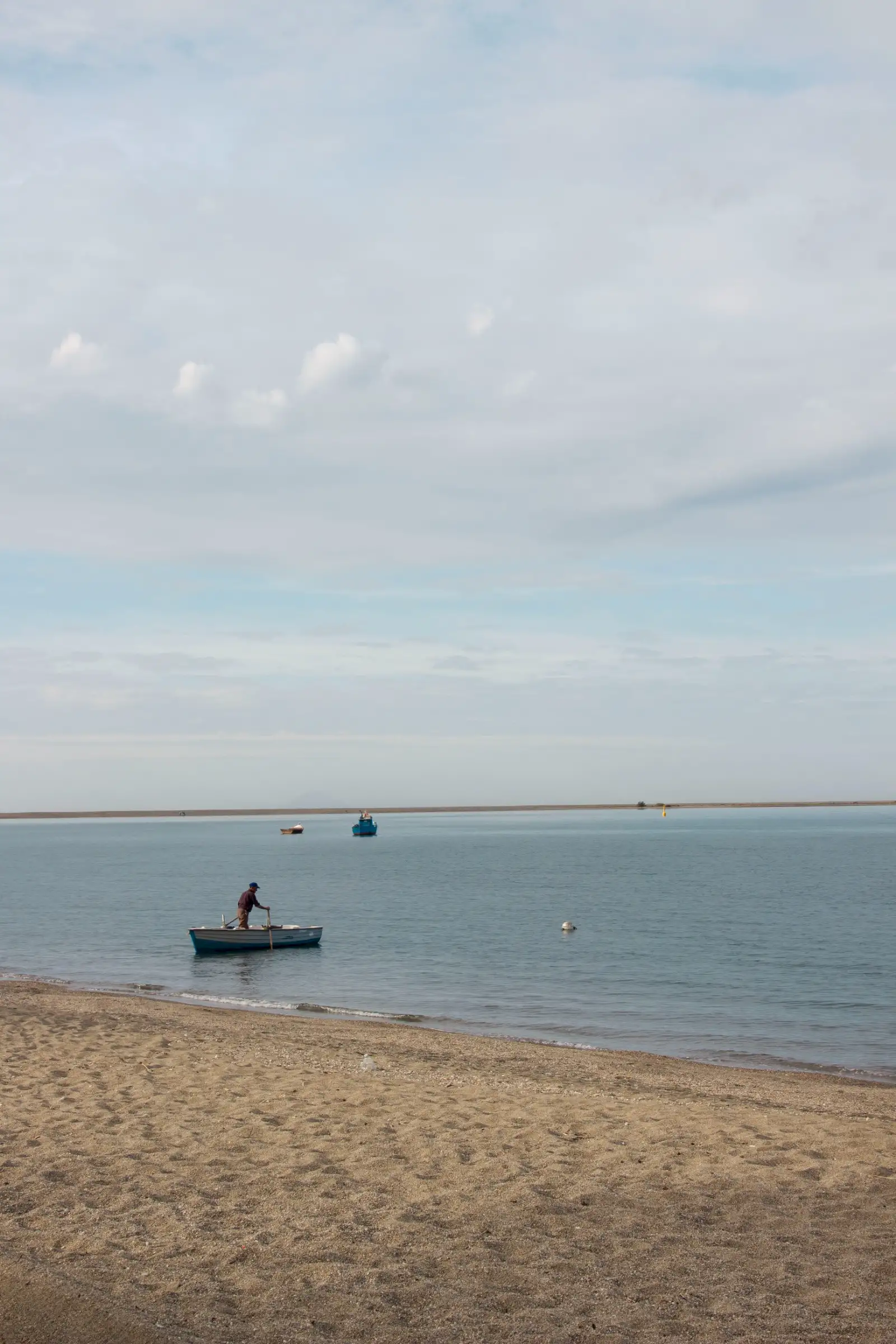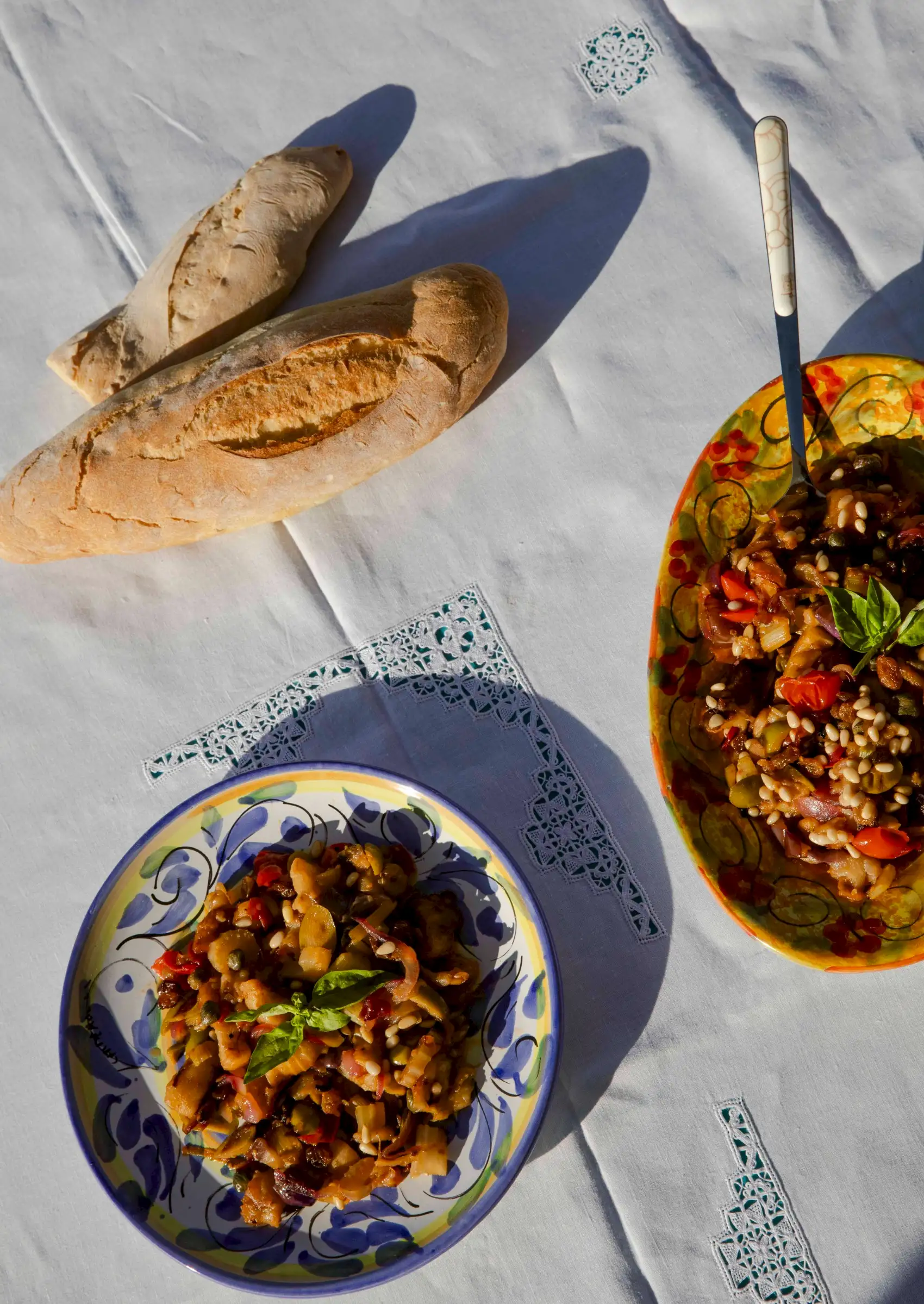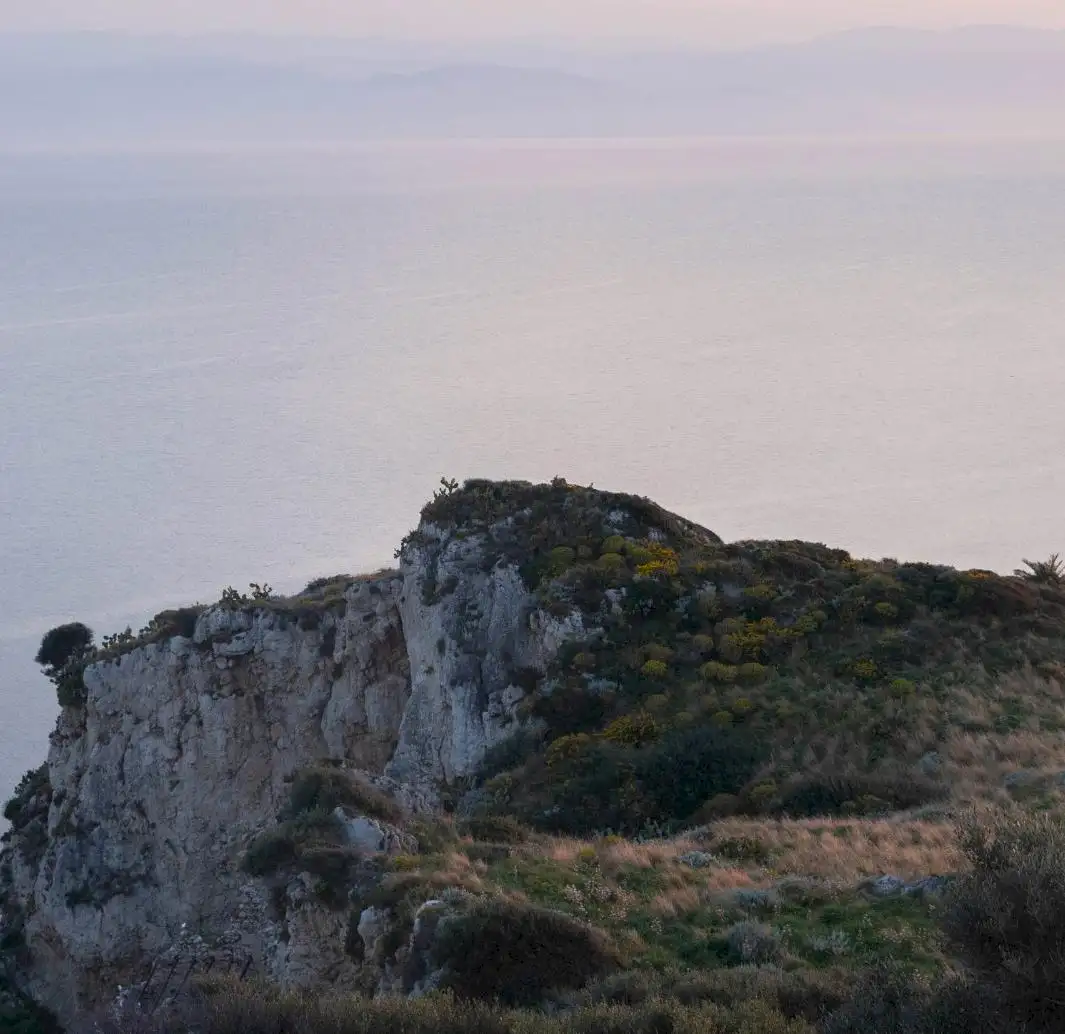
Written by Sofia Di Stefano
photography by Yeelen Tavilla
modified 20 February 2025
5 min. read
Sicily is the kind of place that lives in your mind long before you set foot on it, but to truly love it, you need to understand its pulse. The seasons. The roads. The way the sun dictates the rhythm of life. First things first: Sicily is bigger than you think. Nine provinces stretch across the island, each with its own flavor, its own variety of the Sicilian language, and its own secrets. To see it properly, you have to move through it the right way. Here’s how.
When to Go
Sicily doesn’t believe in one season. It believes in the sharp blue of summer, the soft gold of autumn, the crisp bite of winter, and the impossible lushness of spring.
December to March: Winter in Sicily is mild, with temperatures between 10°C and 15°C (50°F to 59°F). Snow dusts the peak of Mount Etna, but the coastline remains cool rather than cold. It’s a quieter time, perfect for slow exploration—empty archaeological sites, cozy trattorias, and long, introspective walks through baroque towns. The sea is too cold for swimming, but the experience is more intimate, less rushed.
April to June: Arguably the best time to visit. The weather is warm but not overwhelming, sitting between 18°C and 25°C (64°F to 77°F). Wildflowers bloom across the countryside, and the beaches, though inviting, remain blissfully uncrowded. It’s the season of reopening—restaurants, beach clubs, and outside spaces shaking off their winter slumber. If you love hiking, sightseeing, or quiet coastal days, this is your moment.
July and August: Sicily at full volume. The heat rises to 30°C–40°C (86°F–104°F), and every beach, piazza, and town square is alive with people. It’s peak season, which means vibrant nightlife, lively festivals, and restaurants buzzing late into the night. But it also means crowds and the kind of heat that slows everything down. Plan around it: spend mornings at the beach, rest in the shade in the afternoon, and enjoy long, golden evenings when the island comes alive. Many locals retreat to countryside homes or coastal villas—if you visit during this time, renting a place with a pool and planning early morning or late evening outings is the way to go.
September: A sweet spot. The sea is at its warmest, the summer crowds begin to thin, and the island settles into a more relaxed rhythm. Sicilians call it “our second summer.” The weather is still beautiful, but there’s a noticeable shift—less urgency more space to breathe.
October and November: Autumn brings golden light, fewer tourists, and a focus on food. The olive harvest begins, and in towns like Bronte and Zafferana, festivals celebrate pistachios, mushrooms, and seasonal wines. The days are mild, with temperatures around 20°C to 23°C (68°F to 73°F), making it ideal for cultural trips and countryside explorations.
Sicily’s rhythm isn’t just about the weather; it’s about the way the island celebrates life. From Infiorata in Noto (when the streets become floral masterpieces in May) to Ottobrata in Zafferana (an October festival dedicated to local produce), the island’s traditions are worth timing your trip around.
Driving in Sicily
To truly experience Sicily, you’ll need to move beyond your destination. Public transport exists, but it’s unreliable outside the main cities, and the real magic lies in the in-between places—the winding coastal drives, the hilltop villages, the detours that lead to unexpected views.
If you’re renting a car—and you should—consider getting full insurance ("kasko") if you want to be completely worry-free. Roads in Sicily aren’t always as smooth as in other parts of Italy, and rural areas often have bumpy, unpaved paths. But they lead to unique places. A beach with no name. A vineyard where the owner pours you a glass of wine and tells you about his grandfather. The payoff is worth it: the freedom to explore on your own terms, the spontaneity of unplanned detours, and access to places you wouldn’t reach any other way.
The Beaches: Wild or Curated?
Sicily gives you choices. There are the spiagge libere—the free beaches. Raw, open, unpolished. The ones where local families set up camp for the day, unfolding tables, spreading out plates of parmigiana and pasta al forno, and even coolers packed with watermelon and fresh drinks. These beaches feel deeply local, and if you love a more rugged, natural setting, they’re perfect.
Then there are the beach clubs, many of them family-run, where hospitality is woven into the experience. Here, you’ll find sunbeds and umbrellas, a welcome stretch of shade, and often a delicious meal. Some places feel familiar after just one visit, and you might end up returning not just for the sea but for the effortless sense of ease they offer. If you’re visiting in summer, book ahead—these spots fill quickly, and for good reason.
Either way, the sea is the same: wild, blue, and worth every second you spend in it.
You Can’t Leave Without Eating…
In Sicily, food is central to pretty much anything. It’s history. It’s community. It’s family. It’s a way of showing love and welcoming you.
Start with arancini—golden, fried, stuffed with ragù or pistachios. Try pasta alla Norma, where eggplant and ricotta salata tell you everything you need to know about balance. Order pasta con le sarde, thick with wild fennel, sardines, and breadcrumbs. Eat caponata, an agrodolce classic that tastes like summer collapsing into fall. And then—cannoli. The shell crisp, the ricotta rich, the pistachios crumbling between your fingers. Granita with brioche for breakfast because in Sicily, dessert is a morning affair. These are just a few suggestions because the list of dishes to try is nearly infinite.
Wherever you are, eat what the locals eat. In Ragusa, that means scacce. In Palermo, panelle. In Catania, horsemeat is grilled over an open flame and eaten on the street.
Book in Advance (But Leave Room for Magic)
If you’re visiting in summer, plan ahead. Popular restaurants and beach clubs fill up fast, and securing reservations can make the difference between a perfect evening and wandering around hungry. That said, don’t plan everything. Sicily rewards spontaneity. Some of the best meals happen in places you stumble upon by chance. Some of the best experiences come from saying yes to something unplanned—a small-town festival, a last-minute boat trip, or a detour down a road you hadn’t meant to take.
Do you also want to discover Sicily? Have a look at our holiday villas in Sicily here.

Sofia Di Stefano & Yeelen Tavilla
Sofia and Yeelen are a creative duo deeply inspired by Sicily’s rich culture, flavors, people, and stories. They blend their expertise in brand storytelling and evocative imagery to craft narratives that leave a mark. Their work is a love letter to their roots and Sicily’s vibrant soul.
